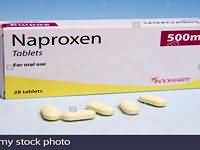CLINICAL USE
NSAID and analgesic
DOSE IN NORMAL RENAL FUNCTION
Rheumatic disease: 0.5–1 g in 1–2 divided dosesMusculoskeletal disorders and dysmenorrhoea: 250 mg every 6–8 hours; maximum 1.25 g dailyGout: 250 mg every 8 hours
PHARMACOKINETICS
DOSE IN RENAL IMPAIRMENT
GFR (mL/MIN)
DOSE IN PATIENTS UNDERGOING RENAL REPLACEMENT THERAPIES
IMPORTANT DRUG INTERACTIONS
Potentially hazardous interactions with other drugsACE inhibitors and angiotensin-II antagonists: antagonism of hypotensive effect; increased risk of nephrotoxicity and hyperkalaemia
ADMINISTRATION
Reconstition
–
Route
Oral
Rate of Administration
–

